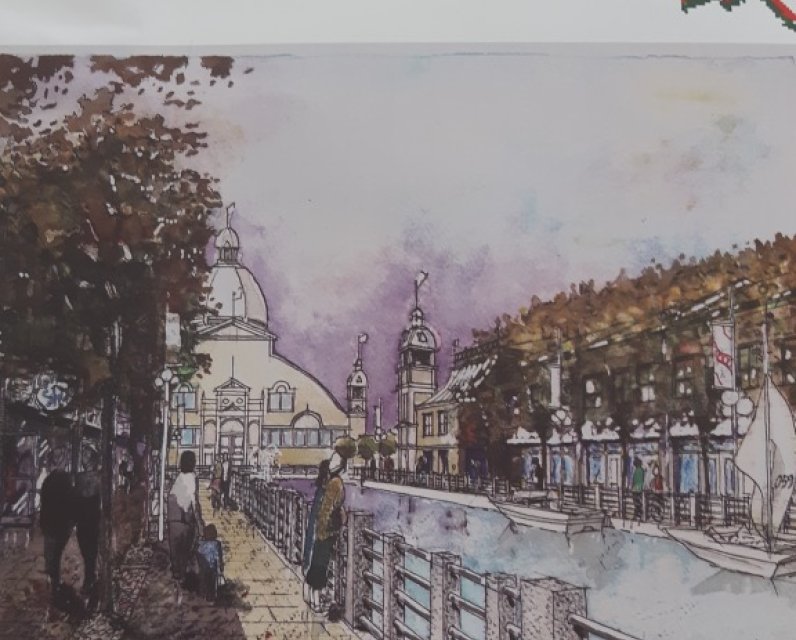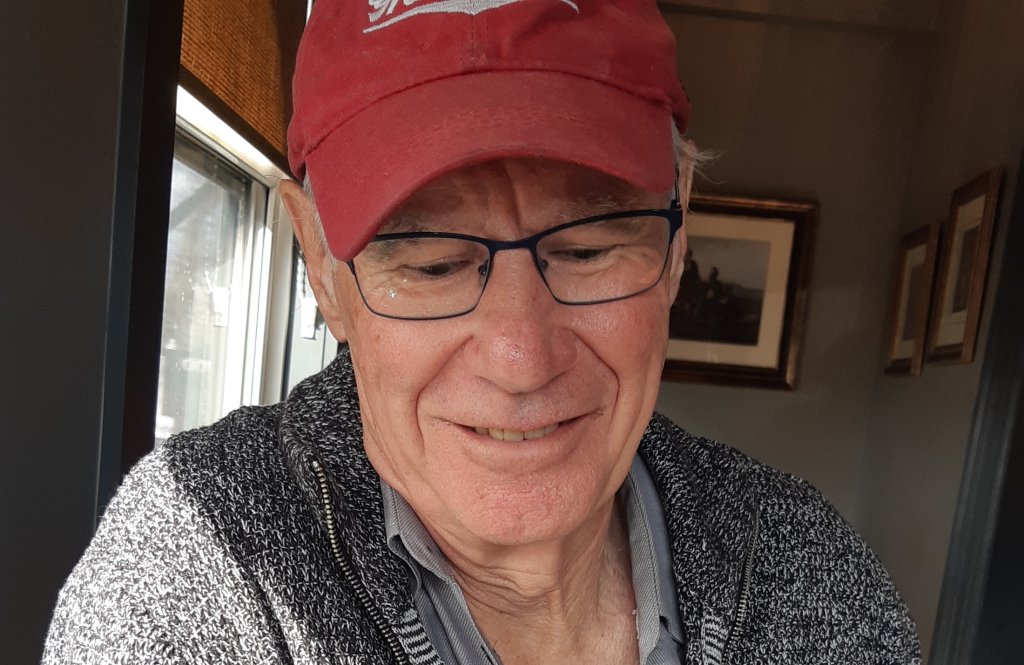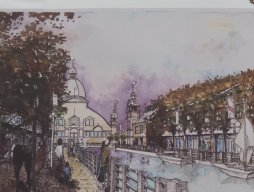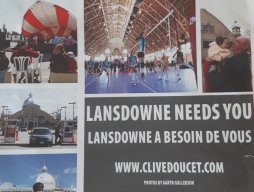Unpublished Opinions
Clive Doucet is a distinguished Canadian writer and former Ottawa city councillor. He was elected for four consecutive terms from 1997 to 2010 when he retired to run for Mayor. As a city politician he was awarded the Gallon Prize as the 2005 Canadian eco-councillor of the year. He was defeated twice by Jim Watson in 2010 and 2018 when he ran for the Mayor’s chair.
The Watsonics, Part V: Reality vs. Idealism

“No one wants to hear about Jane Jacobs or poetry. Stuff it. Focus on Bronson. People want to hear about Bronson. Bronson is your wedge issue. Focus on it. You have no chance if you talk about Jane Jacobs and poetry. Ok?”—Diane Holmes
Councillor Diane Holmes came out to see me perform at my first public meeting after I announced that I was going to run for Regional Councillor. Diane was the dean of the old left wing on Councillor and enjoyed great respect by all sides. In Mayor Marion Dewars days, she had been central to all of the City’s progressive legislation including the city’s extraordinary welcome of refugees from Vietnam after that war. In her youth, she had been a competitive swimmer and still carried herself like an athlete, standing very straight and walking with an easy swing of the hips. She was also tough as nails and had little patience for wasting time. After, the meeting, she stood at the door, waiting to talk to me and I went over. She cut to the chase.
“No one wants to hear about Jane Jacobs or poetry. Stuff it. Focus on Bronson. People want to hear about Bronson. Bronson is your wedge issue. Focus on it. You have no chance if you talk about Jane Jacobs and poetry. Ok?”
She left looking slightly disgusted, and I was left with a sick feeling in my stomach, thinking she was right. But it was always a bit of a struggle for me because what excited me wasn’t power or position. I had never had any political ambitions. What excited me was the idea of cities. The history of cities, the poetry of cities, the creative, enduring nature of cities, all have been a life-long passion; and it had all begun in Toronto working in the Stop-Spadina civic uprising. It marked me forever, changing even my university studies. It was why I was here today.
I had begun university with the intention of being an archaeologist and ended up in what is now called urban anthropology, but then didn’t really have a name. At Toronto, anthropology began by studying all four sub-disciplines, archaeology, physical, social and cultural anthropology, only later in the graduate years were students supposed to specialize. Archaeology, for me, began at a Wendat site called Cayuga. Another summer was spent doing archaeology at the fortress of Louisbourg, Cape Breton, but by that time I was already determined to study the world as it is today, not centuries ago.
Spadina was my archaeology site. I quickly learned to love the jangle of the street and liveliness of the people and neighbourhoods alongside it. I found Margaret’s Atwood’s ‘The Edible Woman’ in a beaten-up pocket paperback someone had left in the laundromat and started reading it while doing my own laundry. Her voice was so clear. I remember thinking ‘ah, so this is what Canadian literature is supposed to sound like’. It blew across my mind like a breeze off a northern lake. Jane Jacobs lived just up the street and I read her book ‘The Death and Life of the Great American City’ with equal avidity. The bagels and cream cheese of Kensington Market were not far away in the opposite direction; as well as strip clubs, pubs, bakeries with the cornucopia of Honest Eds, a few blocks away on Bloor.
Streetcars brought the neighbourhoods together and later I would learn they are the only form of public transit ever invented that can pay for itself out of the fare box. Unlike buses and private cars, streetcars don’t have to be subsidized. The more buses you run, for example, the greater the cost to the taxpayer because the bus fare box rarely pays for more than 50 per cent of the trip cost. On the other hand, moving people in a car, costs about 40 times more than a bus passenger because a car requires 40 times more asphalt and cement. A single indoor parking space costs $25,000. Learning about the costs of the care and feeding of the automobile was one of the more astonishing things I learned as a young city councillor. They were scarcely credible.
About fifty per cent of town and city annual budgets are regularly absorbed with the care and feeding of the automobile. In a city the size of Ottawa that’s billions every year. The costs just drip out like a faucet which is left running. Thousands of years on, it won’t be the pyramids of Egypt archaeologists will be fascinated with, it will be North America’s highways. Just a single freeway interchange in Montreal, the Turcot, cost several billion to replace. This in a city that has trouble funding food banks. Ottawa is no different. Just one KM for one two-lane access road, to one big-box mall ironically called the ‘Train Yards’ after the shunted yards the mall replaced. Cost to Ottawa: $50 Million.
No one blinked, just a couple of extra drips from the faucet. To put that $50 million in perspective. The city stopped building outdoor wading pools in parks, replacing them with splash pads because the pools were deemed too expensive; that $50 million could have put a wading pool in every park and staffed them for years. I learned to make these connections, but it was an effort to think this way. It was almost as if I had to re-program my mind.
When I thought about governing the city, I naturally gravitated to history and poetry and streetcars to give it meaning. In 1971, ten years after Ottawa City Council had torn up the city’s streetcar lines, Toronto city council decided to do the same thing. A little late because by 1971, Toronto’s system was one of the last still rolling on the entire continent. The vast Los Angeles city rail system had all been paved over and forgotten long ago, but as luck would have it, in 1971 the OPEC oil strike hit North America. Suddenly moving anything with gasoline was a problem. Equally, it was suddenly obvious that electric streetcars were the only transit alternative Toronto had to Saudi oil and at the eleventh hour, Toronto city council reluctantly reversed its decision and kept the city’s streetcars.
Idealistically, I thought it was possible to begin bringing back a modern version of the old streetcars to Ottawa city streets. In 1997, I had been elected on a platform of stopping an urban expressway, (the Bronson) and converting an old freight line into an urban rail system that luckily ran parallel to Bronson. We did the conversion in three years, building eight kilometres of modern streetcar service for a small cost (20 million). The O line was a great success. Having demonstrated rail would work, with the Regional Chair’s support, I remained confident that we could quickly return street cars on to broad city boulevards like Carling where it was cheap to do. There was plenty of right-of-way road space and the Avenue served the entire western end of the city. I imagined Carling becoming Ottawa’s version of Spadina except longer and better.
At the same time, we bought the Prince of Wales railway bridge from Canadian Pacific for an incredible $10 Million. (Considering a road bridge across the Ottawa would cost billions and would carve up communities on both sides of the river). The old railway bridge was a cake walk. All we had to was extend our little O-line service across the river rail bridge to give the city a quick, cheap connection between Ottawa and Gatineau.
How could we fail? Fifty thousand people needed to cross the river every day. It was the city’s premier transit choke point and the new O-train line ended just a couple of hundred metres before the bridge. We were there!
We weren’t.
Like killing the Spadina Expressway in Toronto, killing Bronson was a one-off, it would change nothing in the larger picture. The success of the little O-line conversion convinced city planners they would be able to free up more road space in the downtown for ‘traffic’ by digging a tunnel and connecting it to the old grade separated busway (transit way). This decision was extraordinarily stupid. Every perfectly fine bus bridge would have to be torn down and replaced for the heaver streetcars, costing millions. It broke my heart to see the waste but the worst part of it after years of relentless work, the city would have no more public transit than it had when the busway was operating. The new LRT would never be anything more than a replacement service. Transit ridership declined steadily.
The extent of the Ottawa transit disaster is still not widely understood, not just because of the stupidity of the original routing decisions, but because of the political interference the provincial inquiry uncovered that without an impartial provincial inquiry it is difficult to believe. The Rideau Centre station has already had a sink hole big enough to sink cars and presently the underground station has water infiltration that requires industrial sump pumps to keep from flooding the tunnel. No real surprise because there was never supposed to be a station at the corner of Rideau and Sussex because it is where the Rideau Canal meets the Ottawa and the natural underground watercourse for the entire Rideau River watershed. It was changed by the Mayor’s office to please the Rideau Centre Mall, but it’s in the wrong place hydrologically. The contractors know this and that’s why they’re in court with the city now.
I was always confident the city had made the wrong decision to move the streetcars underground and extend the new line along the western parkway instead of Carling Avenue where people live, work and play; but I always thought the actual trains would function. I’m not sure now they ever will. In the interests of ‘saving money’, the city insisted on the cheapest everything, cheap, untested wheel sets, cheap rails, cheap electric infrastructure and surprise, surprise. The cars jump the tracks, wheels fall off, the electric bounces around. There has never been anything but years of erratic, undependable service. Nor does it seem there’s any repair solution. He equipment is just too crappy. My prediction is that the day will come when the city will, reluctantly, close the eastern entrance to the tunnel and redirect the rails to the surface as the original plan called for.
The power of the developer and hotel lobby twisted our little Bronson Avenue success story to fit their own needs. There was no quiet streetcar revolution. Successful city politics would remain anchored in old fashioned retail politics Mayor Watson’s famous line ‘he would go to the opening of an envelope’ and electoral success would remain dependent on funding by developers, with the majority of city councillors getting the bulk of their election war chests filled by developers.
Clive Doucet served as Capital Ward’s City Councillor from 1997 to 2010. He ran for Mayor twice in 2010 and 2018. His last book is Grandfather’s House, Returning to Cape Breton. The Watsonics is a nine part political memoir being published in instalments, here first on Unpublished.ca.
More in this series...
The Watsonics, Preface: A Hard Slap >
The Watsonics, Part I: Walking Through the Door >
The Watsonics, Part II: Looking Back >
The Watsonics, Part III (a): Battle at the Ol' Cattle Castle >
The Watsonics, Part III (b): Amalgamation Squashes Democracy >
The Watsonics, Part IV: Grandfather's Farm >
The Watsonics, Part VI: Uruk and Ottawa >





Comments
Be the first to comment